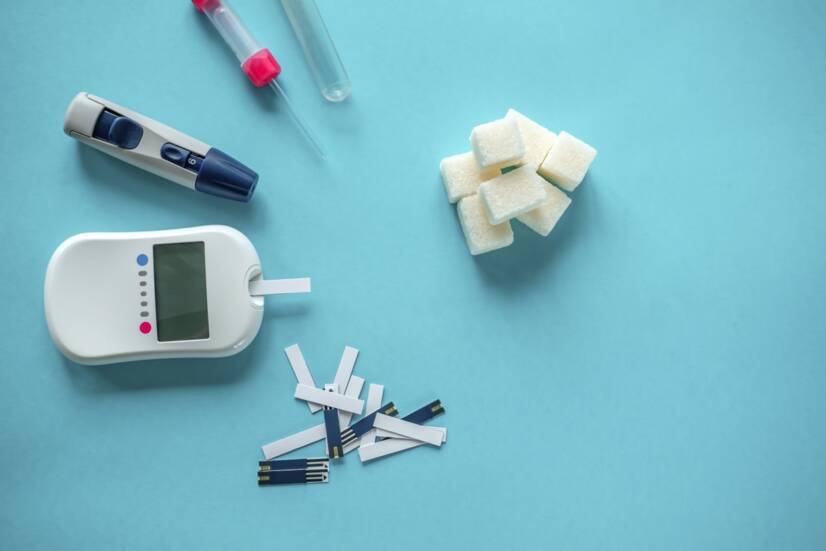- mayoclinic.org - Diabetes
- diabetes.co.uk - Blood Sugar Level Ranges
- webmd.com - Normal Blood Sugar Levels for Adults With Diabetes
- who.int - Mean fasting blood glucose
FACT: Glycemia, blood sugar. How much is normal, too little or too much?

One of the closely monitored parameters is glycaemia, or blood sugar. What is a normal, low or high blood sugar level?
Article content
- 1. ☑ NORMAL blood sugar levels in a non-diabetic person - fasting
- 2. ☑ NORMAL blood sugar level in a person with diabetes - fasting
- 3. ☑ NORMAL 2 hours after a meal in a person without diabetes
- 4. ☑ NORMAL 2 hours after a meal in a diabetic
- 5. ↓ LOW BLOOD SUGAR HYPOGLYCEMIA
- 6. ↑ HIGH BLOOD SUGAR HYPERGLYCEMIA - fasting in a non-diabetic
- 7. ↑ HIGH BLOOD SUGAR HYPERGLYCEMIA - fasting in a diabetic
- 8. Millimol or milligram
- 9. Conversion times × ↔ divided by ÷ 18
- 10. Why does the disease occur and what are the risk factors for its onset?
- 11. Complications of diabetes
- 12. Hypoglycaemia
- 13. Hyperglycaemia
A healthy person is more likely to find himself in a state of reduced sugar levels. Increased physical activity and reduced food intake are examples. He can cope with higher levels.
High blood sugar or hyperglycaemia is typical of a disease called diabetes. It is caused by insufficient insulin production or its lack of effect.
Both HYPOglycemia and HYPERglycemia are two terms that are familiar mainly to diabetics. The alarming information is that cases with diabetes are increasing.
Worldwide, we are seeing more people with type 2 diabetes mellitus. In the past, it was more of a disease affecting the elderly. Today's modern times mean an increase in cases even in the young.
And you ask: why?
In short, it is mainly factors such as: poor lifestyle and inappropriate diet, predominance of sugars in the diet, lack of exercise, underweight and obesity.
1. ☑ NORMAL blood sugar levels in a non-diabetic person - fasting
3.9-5.5 mmol/l = 70-99 mg/dcl
2. ☑ NORMAL blood sugar level in a person with diabetes - fasting
4.4-7.2 mmol/l = 80-130 mg/dcl
3. ☑ NORMAL 2 hours after a meal in a person without diabetes
up to 7.8 mmol/l = 140 mg/dcl
4. ☑ NORMAL 2 hours after a meal in a diabetic
up to 10.0 mmol/l = 180 mg/dcl
5. ↓ LOW BLOOD SUGAR HYPOGLYCEMIA
below 2.8 mmol/l = 50.4 mg/dcl
6. ↑ HIGH BLOOD SUGAR HYPERGLYCEMIA - fasting in a non-diabetic
above 5.5 mmol/l = 99 mg/dcl
7. ↑ HIGH BLOOD SUGAR HYPERGLYCEMIA - fasting in a diabetic
above 7.5 mmol/l = 135 mg/dcl
The table gives a brief breakdown of glycaemia by value
| Designation | mmol/l | |
| Hypoglycaemia | ↓ | less than 2.8 |
| Standard | ☑ | 3,9-5,5 |
| Hyperglycaemia | ↑ | above 5.5 |

8. Millimol or milligram
The units in the glycemia display are:
- mmol/litre l
- mg/deciliter dcl/dl
9. Conversion times × ↔ divided by ÷ 18
Remember the number 18:
Convert from millimoles to milligrams by multiplying 18 ⇒ 4.0 mmol/l x 18 = 72 mg/dl.
To convert from milligrams to millimoles, divide 18 ⇒ 72 mg/dl : 18 = 4.0 mmol/l.
10. Why does the disease occur and what are the risk factors for its onset?
Diabetes is divided into 2 types.
Type 1 diabetes mellitus does not have a clear cause of onset. It is a chronic lifelong disease. It requires insulin to be supplied to the body by artificial injection.
The underlying cause is an autoimmune process that disrupts the function of the pancreas (its B cells) to make insulin.
The triggering of this reaction may be due to genetic predisposition and heredity. In some cases, the influence of viruses is also thought to be involved.
Different factors can be responsible for the development of type 2 diabetes. And some of them can be influenced by our actions. An example is a poor lifestyle, which includes various sub-components.
Risk factors for type 2 diabetes include:
- Overweight and obesity
- unbalanced diet
- a predominance of sugars in the diet
- lack of exercise
- lack of sleep
- exposure to chemicals and toxins
- genetics and family history
- gestational diabetes
- high blood pressure
- polycystic ovary syndrome
- stress
gestational diabetes is a special type. This should correct itself after birth, but in a small percentage of cases it may continue as type 2 diabetes.
11. Complications of diabetes
In any case, this disease has its complications.
12. Hypoglycaemia
Low levels can cause a number of manifestations.
Examples are change in mental state to aggressiveness, disorientation, weakness and fatigue, headache, white and sweaty skin, collapse, unconsciousness, body convulsions to coma and death.
Low blood sugar is particularly threatening to people with diabetes who inject insulin.
It happens that after injecting insulin, they forget to eat or inject a higher dose of insulin than needed.
This is why insulin is never given when blood sugar is low - hypoglycaemia.
13. Hyperglycaemia
Prolonged elevated blood sugar levels have negative effects throughout the body.
It negatively affects e.g.:
- blood vessels
- nerves
- the retina of the eye
- which is associated with a risk of developing
- neuropathy, angiopathy, retinopathy, diabetic foot, nephropathy
View full article: What is normal and what is hyper/hypoglycemia?
+ articles:
Interesting resources
Related










